![]()
| Alcock,
Lindley and Bloore Ltd |
Location and period of operation:
|
Alcock,
Lindley and Bloore Ltd |
Hanley |
1919 |
|
Manufacturer of earthenware
teapots at the Albert Works, Hanley,
Stoke-on-Trent, England.
|
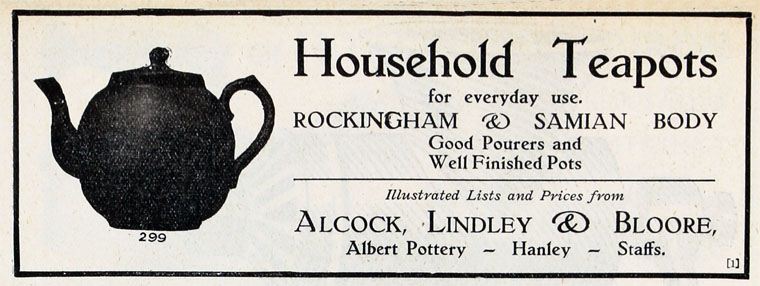
Hosehold
Teapots for everyday use
Rockingham
and Samian body
Good Pourers and Well Finished Pots
Alcock,
Lindley and Bloore
Albert Pottery - Hanley - Staffs
- Advert - December 1921
courtesy: Graces Guide
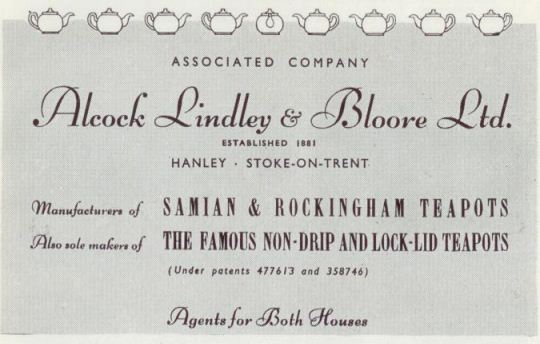
Alcock, Lindley & Bloore Ltd., Hanley,
Stoke-on-Trent
Pottery Gazette Reference Book 1947
the 'Established 1881' refers to the teapot business of Isaac Smith
which ALB purchased in 1919
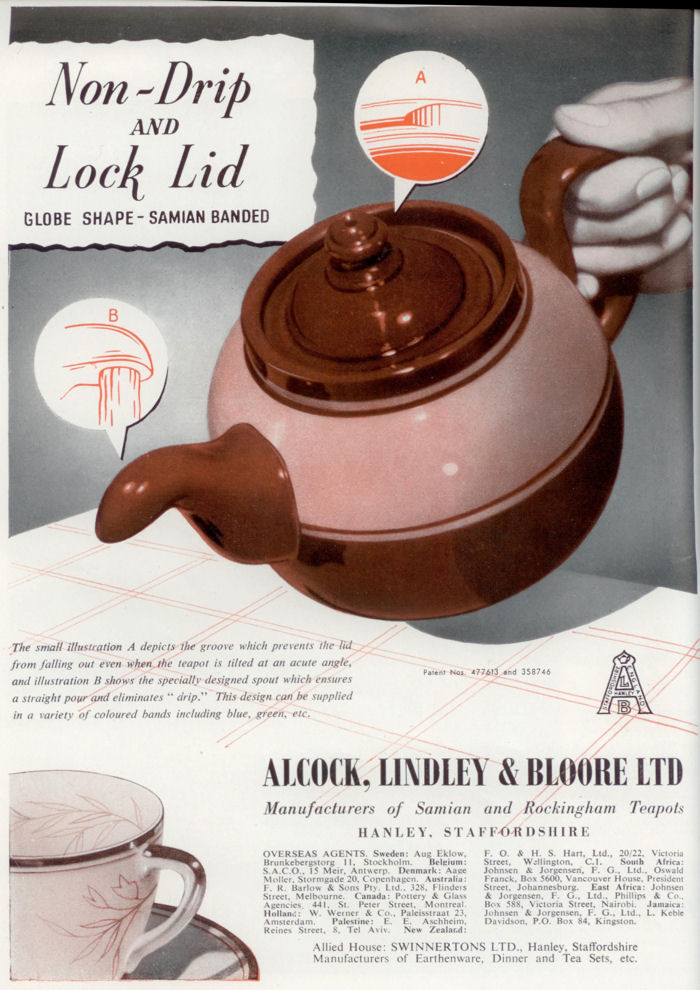
Alcock,
Lindley and Bloore Ltd
manufacturers of Samian and Rockingham Teapots
- Pottery Gazette, April 1953 -
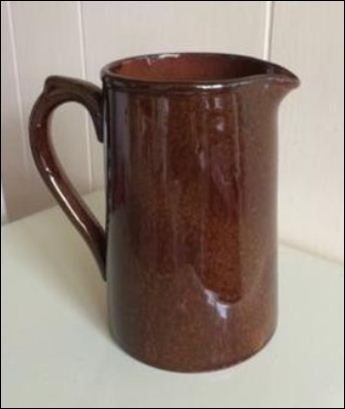
although the vast majority of the output was teapots they
also produced milk jugs and sugar bowls and coffee pots
typical ware produced by Alcock, Lindley & Bloorecover photo from the ALB Collector's Guide by Sheri Murphy-Hughes
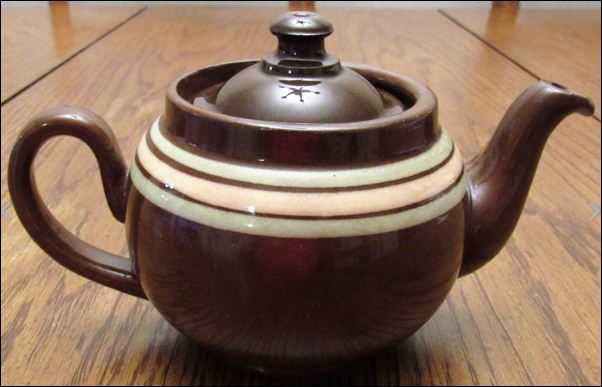 this teapot was produced c.1965-72 period after the busines became part of Allied English Potteries and Alcock, Lindley and Bloore was a division of Ridgway Potteries Ltd (part of AEP) |
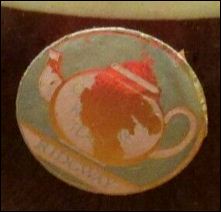 Ridgway |
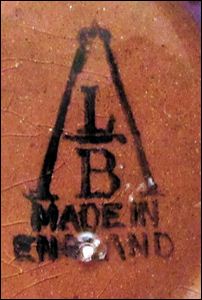 ALB mark |
Marks used on ware for identification:
All marks are of the same basic design although there are slight variations
ALB
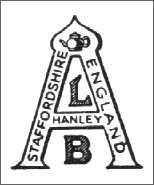 this mark appears in the 1947 & 1960 Pottery Gazette Reference Book |
 ALB Hanley Staffordshire England |
 ALB Made in England |
 ALB Made in England mark from c.1965-72 |
Alcock, Lindley and Bloore
produced "The famous non-drip and lock-lid teapots"
under patents 477613 and 358746.
|
Pottery works of Alcock, Lindley & Bloore: Alcock, Lindley and Bloore manufacturered teapots from at least four different factories, three in Hanley and one in Burslem. Operation dates are approximate.
|
In
1919 Alcock, Lindley and Bloore purchased
these works from Smith & Co
- click for more information -
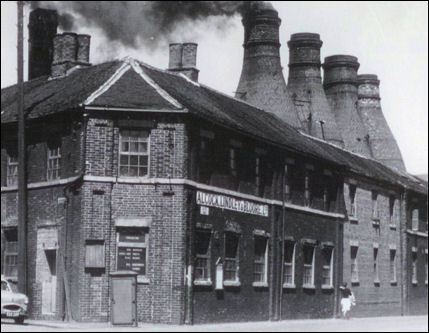
the Scotia Works
(Burslem) of
Alcock, Lindley & Bloore
the company operated here from c.1925 to c.1956
- click for more information -
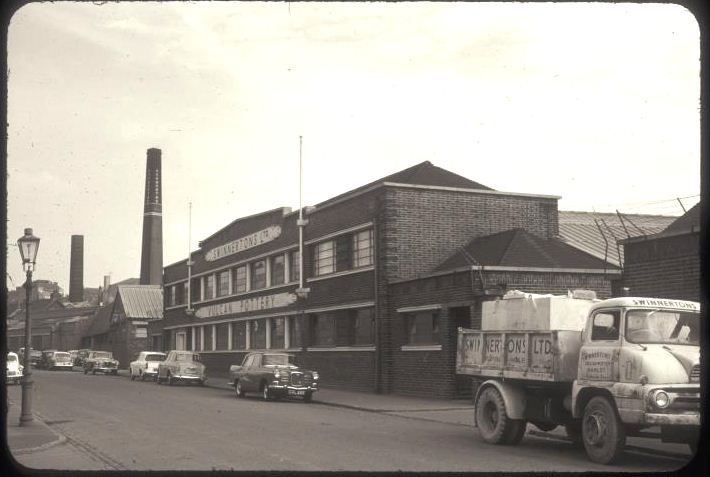
1963 photo of the Vulcan
Pottery in Clough Street, Hanley
phto: Mr Bert Bentley,
Stoke-on-Trent City Archives
Staffordshire
Past Track
|
The Vulcan Pottery was operated by Alcock, Lindley & Bloore, along with the neighbouring Ascot Pottery on Clough Street, between the two works is Slippery Lane. The Vulcan Works dates from the early 1900s although the photograph shows the 1950s rebuild. The company specialised in table ware and lasted as an independent works until becoming part of Allied English Potteries (early
1960s). |
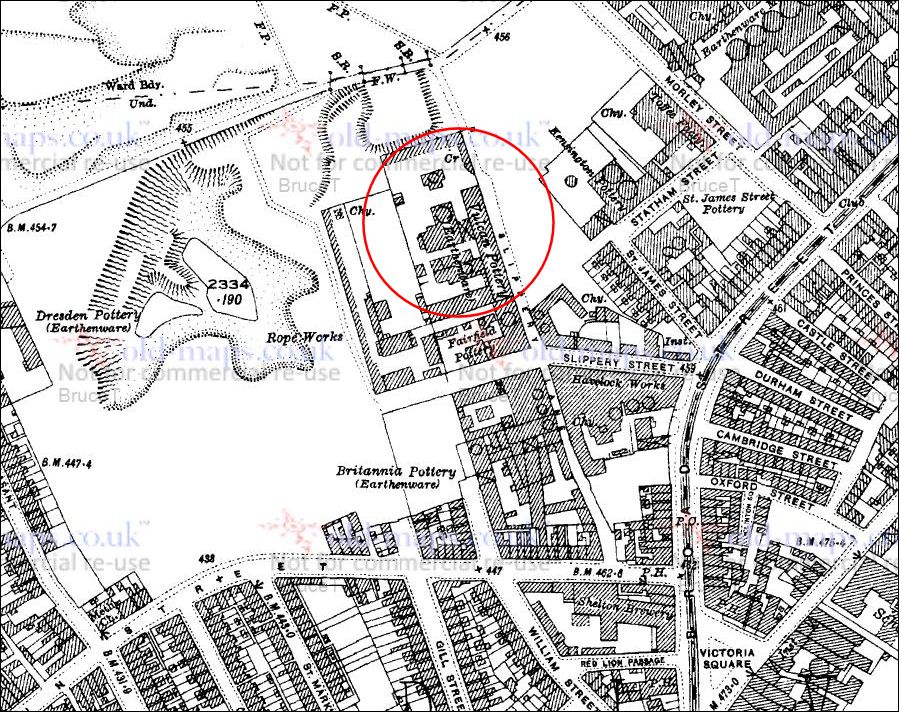
1924 map showing the Vulcan
Pottery Works on Slippery Lane (adjacent to Clough Street)
In 1938 a start was made to rebuild the Vulcan Pottery, but it was interrupted by
the Second World War, the development was completed in 1952
Courtesy: old-maps.co.uk
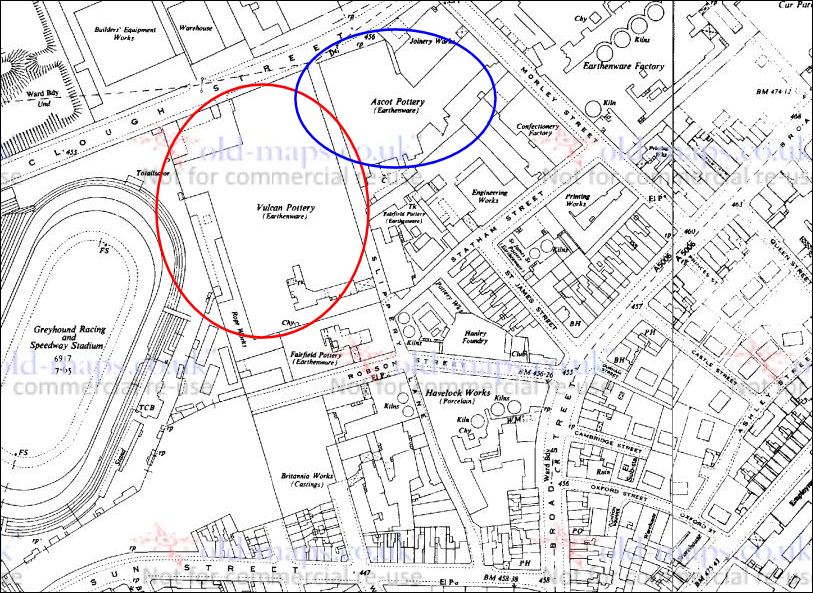
1951 map showing the extended Vulcan
Pottery Works and the Ascot Pottery on either side of Slippery Lane
Courtesy: old-maps.co.uk
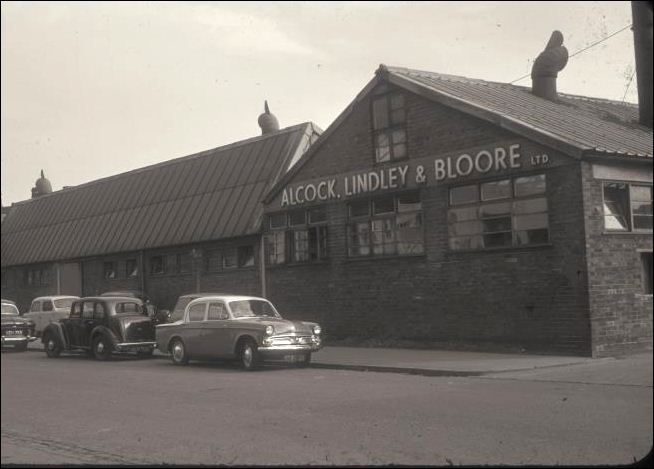
1963 photo of the Ascot Pottery
in Clough Street, Hanley
phto: Mr Bert Bentley,
Stoke-on-Trent City Archives
Staffordshire
Past Track
|
The Ascot Pottery was operated by Alcock, Lindley & Bloore, along with the neighbouring Vulcan Pottery on Clough Street. Both works are now demolished and the site cleared, the works stood would be just alongside the City Centre ring road -the Potteries Way. |
Questions/comments/contributions? email: Steve Birks